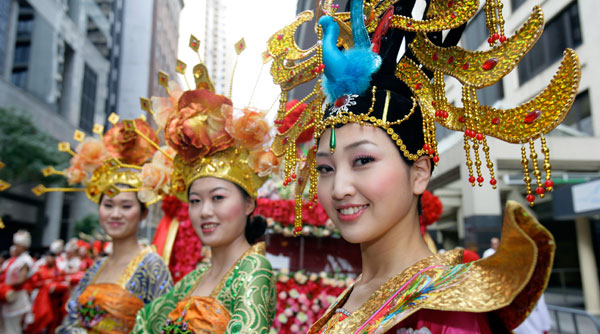
The Chinese New Year originated out of fear and myth. Tales and
legends say that it started with a fight against a mythical beast called
Nien. He appeared on the first day of the New Year to demolish
livestock, crops and villagers, especially children. To protect
themselves, the villagers stared placing food on their door front, for
Nien, as they believed that he would not attack people after eating
food. It so happened one day that Nien got frightened by a child who was
wearing red clothes, which brought out his weakness in front of the
villagers. Since then, every year, before the New Year arrived,
villagers started hanging red lanterns and red spring rolls on their
windows and doors, to scare away the beast.

The tradition of using red decorations continued over the ages and
became a part of New Year celebrations. The dates of Chinese New Year
are determined by the lunisolar calendar. And, as per the Gregorian
calendar, Chinese New Year falls on different dates every year,
somewhere between January 21 and February 20. According to the Chinese
calendar, the winter solstice must occur in the 11th month,
which means that Chinese New Year falls on the second new moon after the
winter solstice. The day is observed as a public holiday in various
other countries and territories as well, where a sizeable Chinese
population resides.
The period around Chinese New Year is called chunyun.
The New Year’s Eve is called "Chuxi”, which means "Year-pass Eve”. Around this
time, all those Chinese who have migrated to other parts of the world
travel back home, to have reunion dinners with their families on New
Year’s Eve. Hence, the largest human migration takes place around this
festival. Chinese New Year celebrations start on the first day of the
first month and ends on the 15thth day
is called Lantern Festival, where families walk the street carrying
lighted lanterns. This marks the end of Chinese New Year festivities. day.
The principal color used in Chinese New Year celebrations is red.
The color represents joy and symbolizes virtue, truth and sincerity. All
the things associated with New Year and its ceremonies, such as
candies, cakes, decorations, clothes etc, are painted in the color red. A
red painted face can also be seen on the Chinese opera stage around
this time, denoting a sacred or loyal personage and sometimes, a great
emperor. The color red has been made into a Chinese sound called "hong”
as well, which means "prosperous”. So, around New Year time in China,
you will find the color almost everywhere.
| 




 "Troyeshchyna" Gymnasium Land
"Troyeshchyna" Gymnasium Land


